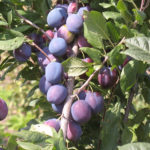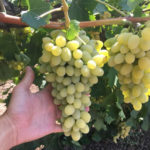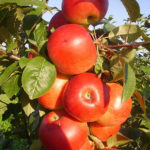Potato variety Zorachka
Zorachka is a Belarusian early-ripening potato variety (Solanum tuberosum) for table use. Bred by the staff of the RUE "Scientific and Practical Center of the National Academy of Sciences of Belarus for Potato and Fruit and Vegetable Growing". In 2013 he was included in the state register of breeding achievements of the Russian Federation. Approved for cultivation in two regions of the country: North-West (Vologda, Kaliningrad, Kostroma, Leningrad, Novgorod, Pskov, Tver, Yaroslavl regions) and Central (Bryansk, Vladimir, Ivanovo, Kaluga, Moscow, Ryazan, Smolensk, Tula regions). Differs in poor digestibility of tubers. Poorly tolerates drought, relatively resistant to mechanical damage.
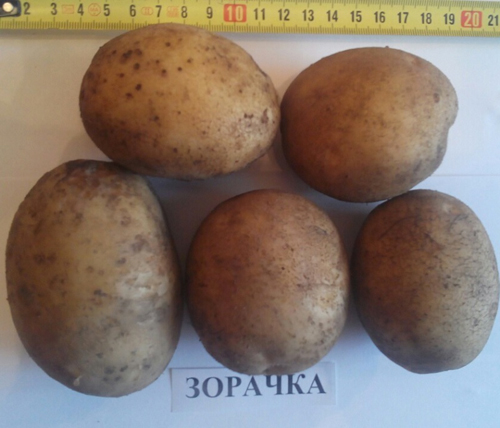
It takes about 70-75 days from germination to full ripening, but the first crop of potatoes can be harvested on the 45th day of the growing season.
The plant is of an intermediate type, semi-erect, low, sometimes growing to a medium height. The leaves of Zorachka are medium in size, intermediate type, green in color. The flowers are red-violet.
On one plant, 9-12 uniform, leveled tubers with an average weight of 92-119 grams are formed. They are oval, sometimes elongated. The rind is yellow, smooth to the touch. The pulp is light yellow in color. The eyes are small, shallow.
During state trials in Russia, the variety has proven itself very well. Marketable yield was recorded at the level of 254-316 kg / ha, which is comparable to the standards Zhukovsky early and Artemis. On the 45th day of the growing season, during the first digging, it was possible to collect 143−251 c / ha, at the level of standards Pushkinets and Zhukovsky early. On the 55th day after full germination, during the second digging, in different regions, from 199 to 280 centners of potatoes were obtained per hectare of area, at a level and 86 centners / ha higher than Zhukovsky's indicators. The maximum yield was recorded in the Tula region - 383 c / ha, 143 c / ha more than the Dolphin standard. Marketability is high - 80−96%, keeping quality is also excellent - 96%.
Good taste, Zorachka is classified as AB culinary type. The tubers are poorly boiled, so they are best suited for frying, making salads, soups and vegetable mixtures. They will also show themselves well as boiled young potatoes. The starch content in the pulp is 12.7-14.2%.
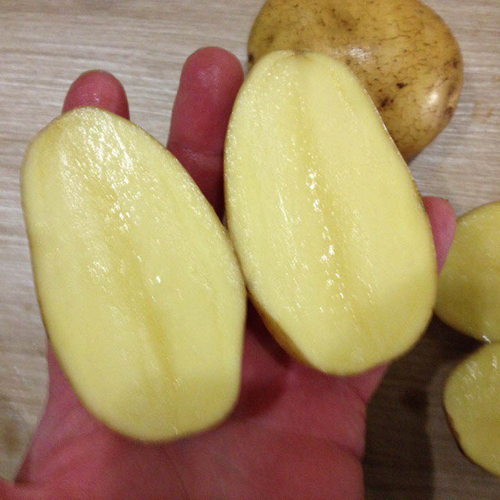
Plants are not demanding on soils and climate, however, the originator himself notes that this variety is better suited for growing on light and medium-sized soils, that is, on sandy loams and loose loams. In agricultural technology, our hero is quite simple, but if you pay more attention to him, he will definitely respond to this and will delight you! So, if you provide the plants with sufficient mineral nutrition, the share of marketable tubers will increase, and in general their number. You should be careful about watering - do not allow the soil to dry out or waterlogged.
The variety originator provides recommendations for planting density. When cultivated for personal consumption or sale of marketable potatoes, about 50-55 thousand tubers are planted per hectare of area, or 500-550 pieces per hundred square meters. If you want to grow seed, you should plant 60-65 thousand tubers per hectare, or 600-650 per hundred square meters.
Zorachka is resistant to golden cyst nematodes and cancer, but susceptible to Y virus. Medium resistant to late blight in tubers and tops.
This variety is very fond of gardeners for its unpretentious care and undemanding to soil and climate. It has spread quite widely across household plots in many parts of Russia. Another main advantage is the excellent keeping quality of tubers - according to the reviews of potato growers, they can be stored until next year even in an apartment, while not losing their consumer qualities. It should be noted also good taste, resistance to diseases, rather high yield.
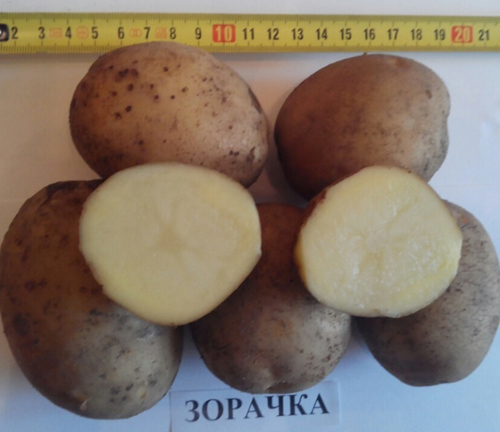
Our hero is distinguished by early tuberization and rapid accumulation of yield in the first half of the growing season, so you can very soon after planting start digging in young tubers.
The disadvantages include poor plant resistance to drought, as well as their susceptibility to the Y virus. Otherwise, Zorachka is a very good potato, one of the most popular early-maturing varieties bred by Belarusian breeders.
